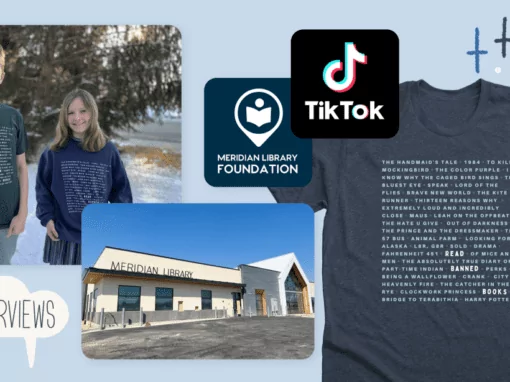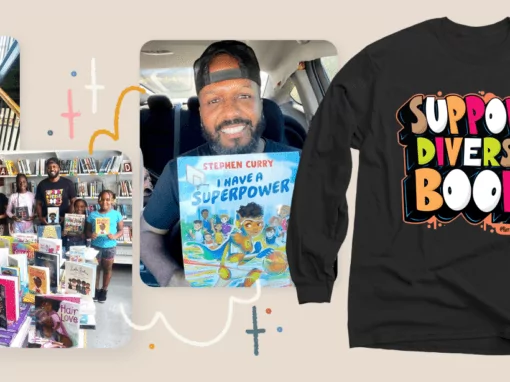When Annie Segarra participated in the Women’s March in January, she noticed that although the worldwide event sought inclusivity, there was a lack of attention placed on making the event accessible to those with disabilities.
Inspired by the simplicity of the 1970’s statement “The Future is Female”, Annie created a movement using #TheFutureisAccessible and a t-shirt of her own to advocate for a future world that is accessible to everyone. She uses her Youtube channel, as well as Instagram and Twitter, to advocate for true equality for all.
Continue reading Bonfire’s interview with activist Annie Segarra, as we learn more about her advocacy work behind the community she’s grown around her through being transparent about every aspect of her life.

You have become an active advocate for many different things. Can you tell us more about your path to becoming an activist and the causes you support?
My parents were both very passionate about equality and justice, it might come from them. When I was younger my passion propelled me to attempt leadership roles in school but that passion became less about leadership and more about the work — I don’t have to lead, I just have to be a part of the machine working towards a more just world.
I’ve been awake to several forms of oppression throughout my life due to personal experience. I dealt with racism, ableism, and sizeism as I was growing up; I was aware of prejudices against the LGBT+ community and dealt with that internally until I came out at age 19. And, becoming noticeably physically disabled when Ehlers-Danlos Syndrome (EDS) began to really impact my health and my life. Around age 23, led me to find my disabled community and become more conscious of the injustices there. My personal happens to also be political, my entire existence is political, I live in a world that in so many ways works against me and people like me, and I want to work towards a future where being a part of any of these communities no longer means living in fear, trauma, and injustice.
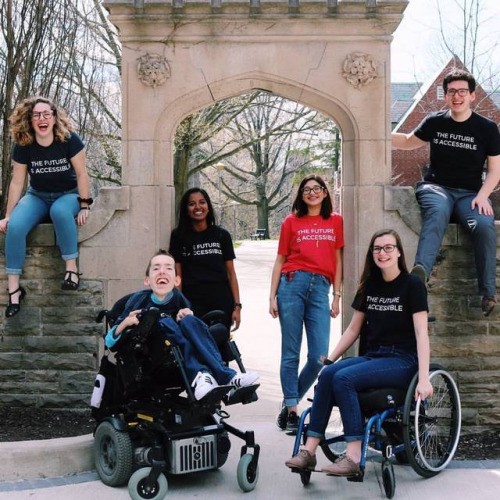
How do you use your presence on social media to progress that advocacy?
My visibility — and my work to uplift the visibility and awareness of diverse communities —is the majority of my work as an activist. I use social media not just to be visible in the literal sense with photos and videos but more so in the metaphorical sense, in that I am very open and candid about my thoughts, observations, and experiences. A lot of fear and prejudices happen directly because of lack of awareness/visibility and while prejudice can sometimes be harmless (I say this in anticipation of those who respond with “who cares what people think of you?”) it more often than not has discriminatory, violent, and oppressive consequences.
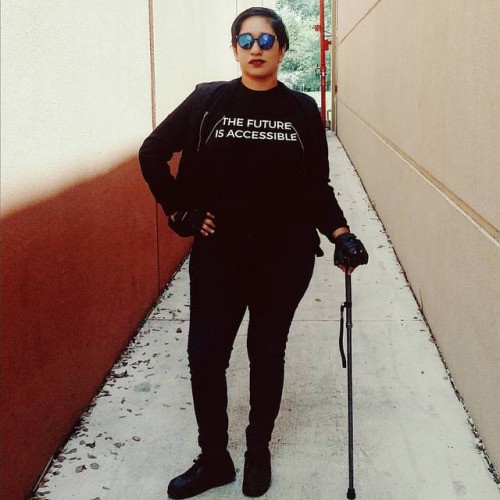
We love the simplicity of the custom shirts in your online store. What led you to create this text-based, statement design?
It was inspired by the iconic “The Future is Female” shirt from the 70’s which is similarly simplistic and by this year’s national Women’s March and the lack of disabled visibility and accessibility that occurred there.
It’s a call for visibility and intersectionality; that if feminism is exclusive of people with disabilities it then becomes oppressive. “The Future is Accessible” is a call to prioritize equity and accessibility, to remember the disabled people in our communities, to integrate them, to uplift them and their narratives.
As both a disability rights advocate and an online content creator, what advice would you give to those getting started on the road to creating more a usable, accessible and inclusive online user experience?
There are quite a few ways to make your online presence more accessible, such as:
- Considering whether a piece should lead with a trigger/content warning for people with PTSD, eating disorders, or other mental illnesses so they may decide what actions to take going forward with the content.
- Adding captions/subtitles to videos for people who are Deaf/Hard-of-Hearing (HoH), have an audio processing disorder, ADD/ADHD, etc.
- Adding image descriptions to photos/images for people who may use screen readers such as those who are blind/visually impaired, color-blind, dyslexic (images with text), have ADD/ADHD, a physical illness/disability that may not allow them to view the screen (for example, I am sometimes in so much pain I cannot move at all from my bed or when I have one of my chronic migraines and it hurts too much to view a screen), etc. It even provides access to those who may not have access to high-speed internet where images do not load, they will still be able to tell the contents of an image if there are image descriptions.
- Adding transcripts for deaf-blind using readers that translate text to braille and other disabled people who need a transcript to access videos (on YouTube a transcript of captions is automatically created when captions are placed).
- Adding audio description to videos/films (serving the same people who would need image descriptions and are hearing). This is more for filmmakers as currently there are not a lot of online options (such as with YouTube and caption options). For audio descriptions, however, you can be conscious that this is an accessibility need and attempt to be audibly clear about visible occurrences in your videos that some might be unable to see. (i.e. Audibly saying in a video “I received this card, it has an image of [blank] on it and it reads…” is more accessible than saying “I received this, can you see it? Isn’t it cute?”)
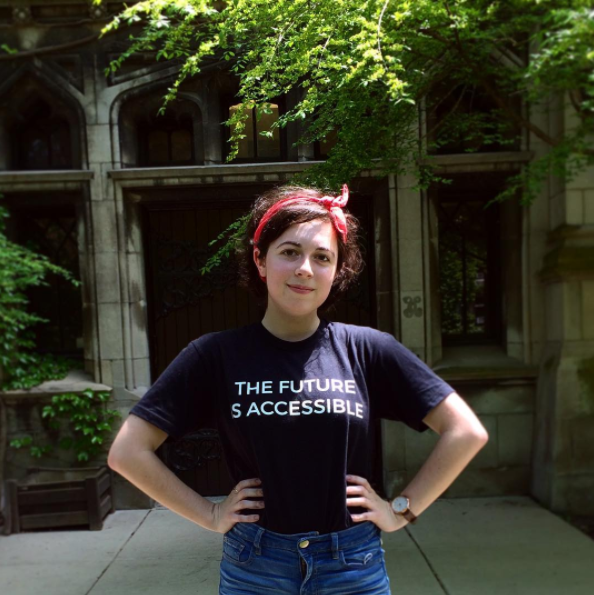
What’s next for you?
I’ll be attending VidCon in Anaheim, California in late June as a guest and will be speaking at panels! That’s right around the corner now and am hoping to see quite a few pals wearing The Future is Accessible shirts there! I’m currently working on some content for EDS Awareness Month (May) and will be continuing creating video content. In the long term I hope to publish books, I have two long-term projects, a fiction and non-fiction, but their progression is rather slow as they require quite a bit of research, soul-searching, and inspiration.
If you would like to join this movement of disability advocacy, you can follow Annie on Instagram, Twitter, and Youtube. You can also purchase your own “The Future is Accessible” apparel here.

Want to read more interviews like this one?
Bonfire Stories is a place for our users to tell their story
and how Bonfire has helped them along the way.


